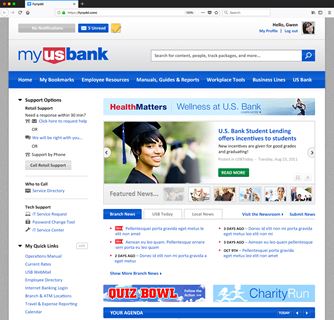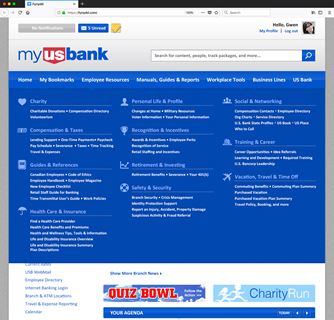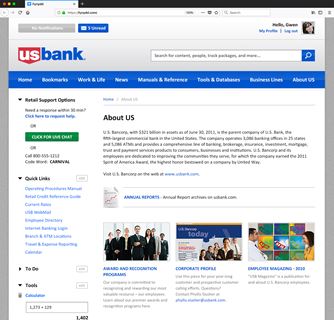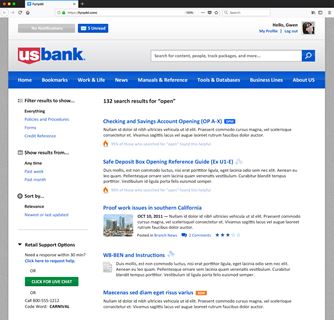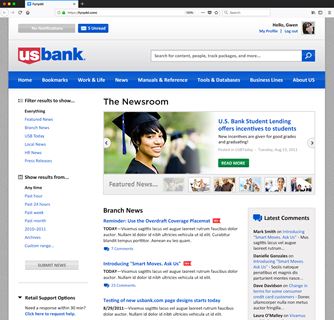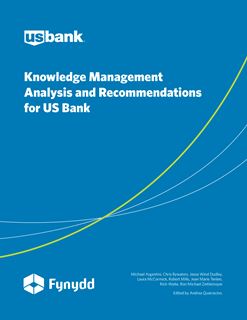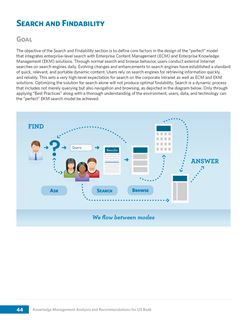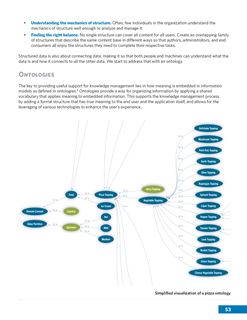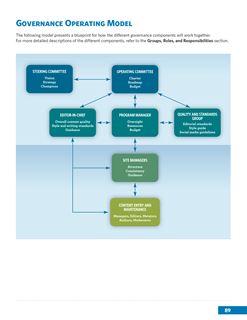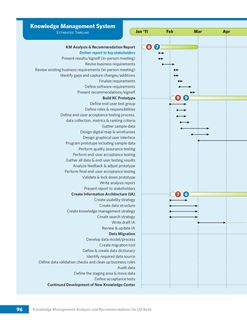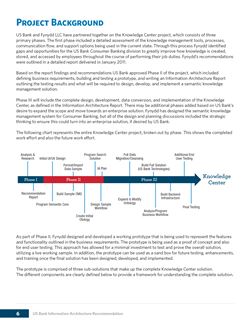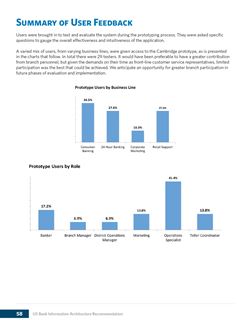 The challenge
The challenge
U.S. Bank is the fifth-largest U.S. commercial bank, operating in more than 3,100 banking offices and holding more than $419 billion in assets. Their 73,000 employees work across departments to help their 18 million customers turn their dreams into reality. Most importantly, they put people first, cultivating and treasuring meaningful relationships with the customers they serve, the colleagues they support and the communities where they live and work.
US Bank was growing too fast to adequately support their staff. So they brought in Fynydd to analyze their support infrastructure, make recommendations, and build a prototype.
It was clear that their support group needed help. Not only was the bank growing rapidly by absorbing other banks, staff turnover caused by rapid growth made it even more difficult to do their job. They needed more automation. They needed bank employees to be able to get help without a phone call.
It was a real challenge to keep their Knowledge Center up-to-date with the most accurate information as new banks were being absorbed into the company, and their authoritative content had to be combed, processed and merged into a single library.
Aside from all the technical challenges, US Bank already had a great "people first" culture. This had to be maintained during mergers, as well as with any recommended platform changes.
US Bank
Industry
- Banking and financial
Project timeline
- 12 months to prototype
Fynydd services
- API integrations
- Bandwidth and traffic analysis
- Gap analysis
- Github source code repository management
- Technical research, consulting
- Rapid prototyping
- Responsive markup with SCSS
- Server security audit
- User experience strategy and design
- User interface design
- Web app hosting



